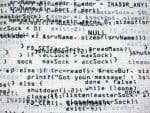In-Short
- Clarifai introduces compute orchestration for AI workloads optimization.
- New platform promises cost reduction and avoidance of vendor lock-in.
- Supports a variety of AI models and hardware, boasting high reliability.
- Public preview available for organizations to test.
Summary of Clarifai’s New Compute Orchestration Capability
Clarifai, an artificial intelligence platform provider, has announced a new compute orchestration feature designed to enhance the efficiency of AI workloads across different computing environments. This innovation, revealed on December 3, 2024, aims to reduce costs and provide flexibility, preventing enterprises from being tied to a single vendor.
The orchestration tool allows for seamless management of AI workloads, whether they are deployed in the cloud, on-premises, or within air-gapped infrastructures. It is compatible with various AI models and hardware accelerators, including GPUs, CPUs, and TPUs. Clarifai’s CEO, Matt Zeiler, emphasizes the company’s extensive experience in supporting enterprise and government AI needs and highlights the internal development of this capability to manage compute costs effectively.
Clarifai’s platform claims to significantly reduce compute usage and costs by up to 90% through model packing optimizations and other resource management strategies. The platform also offers deployment flexibility, integration with Clarifai’s AI tools, and robust security features suitable for sensitive environments.
The emergence of this platform responds to customer challenges with AI performance and cost management. With a track record of processing over 2 billion operations and maintaining high uptime, Clarifai’s compute orchestration capability is now available in public preview for organizations to explore.
Explore Further
For more detailed information and to gain access to the public preview, interested organizations can reach out to Clarifai directly. To learn more about this innovative tool, visit the original source.
Footnotes
Image credits and external sources referenced within the article are acknowledged where applicable.










